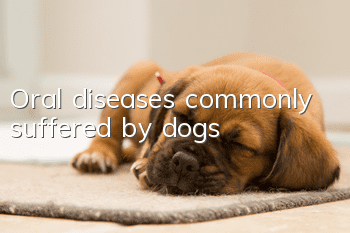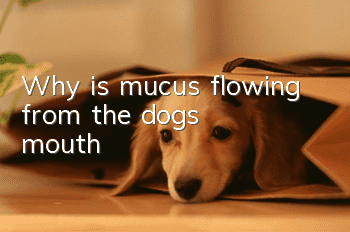Oral diseases commonly suffered by dogs

Clinical surveys show that 80% of dogs and cats suffer from oral diseases, of which 30% require immediate treatment. In recent years, it has been found that many kidney and heart diseases are closely related to periodontal infection, which allows bacteria to enter the blood. It is really a "disease from Orally.” So what are the common dental and oral diseases that dogs have?
Tooth decay
Dogs can also develop tooth decay, and tooth decay can affect a dog’s lifespan. The bones and tissues around the cavities are damaged, resulting in impaired chewing function, which will affect the dog's digestion and absorption over time.
For existing cavities, it is best to extract them to avoid affecting the surrounding normal teeth.
For elderly dogs, you should carefully consider whether to have them removed. The main reason is that they are worried that they will not be able to tolerate anesthesia.
Dental calculus
Dental calculus is formed by the deposition of calcium salts such as calcium phosphate and calcium sulfate, organic matter, iron, sulfur, magnesium and other mixtures with mucus and saliva. It is more common on the outside of canine teeth and maxillary molars. If oral hygiene is neglected for a long time, dogs with severe dental calculus will have bad breath and may easily cause gingivitis and alveolar periostitis.
Gingiva flushing, forming yellow-white, yellow-green or gray-green deposits on the edge of the gums;
Sometimes damage to the tongue and buccal mucosa can be seen, and sometimes due to the extrusion of dental calculus, the periosteal atrophy of the gums and tooth roots can be seen
Gingivitis
After a dog has eaten food and has poor oral hygiene, the food remaining between the teeth will provide a breeding ground for bacteria. After a large number of bacteria multiply, they will form soft tartar, plaque and even calculus on the tooth surface, which will induce gingivitis.
The main symptoms of gingivitis are redness, swelling, bleeding, and pain at the gum line
In some cases, the inflammation process can slowly destroy the gums and tooth supporting tissues, forming an abscess.
Periodontitis
Periodontitis, also known as alveolar pyorrhea, is an acute or chronic inflammation of the periodontal ligament. This disease is characterized by the resorption of alveolar bones and loosening of teeth. Characterized by gingival recession. After the dog is sick, the appetite gradually decreases, the gums become red, swollen, soft, bad breath, salivation, teeth become loose, and the gums are squeezed to exude purulent secretions or blood.
Have the desire to eat, but be cautious;
The gums are red, swollen, soft, have bad breath, salivation, loose teeth, and the gums are squeezed and purulent secretions or blood flow out.
- How to avoid getting your dog pregnant
- What to do if your Bichon Frize keeps having diarrhea? How to treat your Bichon Frize to have diarrhea!
- Causes, Symptoms and Treatment of Difficult Labor in Dogs
- What can’t Tibetan Mastiffs eat?
- How to train a dog to fetch a ball. Commands and rewards are both crucial.
- What should I do if one of my dog’s nails turns black?
- Why do dogs attack people?
- Causes and preventive measures of canine osteitis
- Pomeranian is very disobedient, what is the training method for small Pomeranian?
- Will a dog's stillbirth be expelled automatically?



